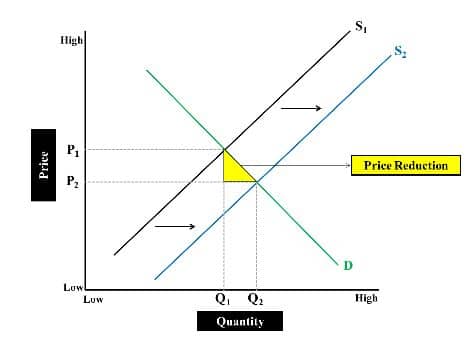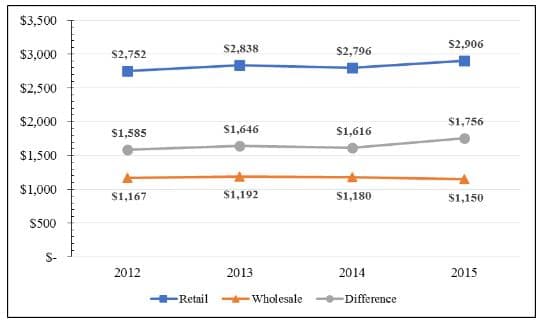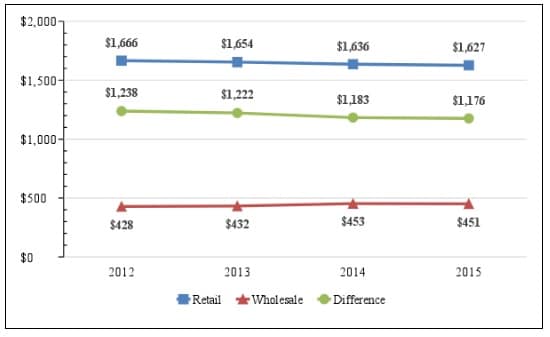Editor’s Note: Hearing Health & Technology Matters (HHTM) is pleased to post the first column from the new Section Editor of Hearing Economics, Amyn Amlani. If you are a frequent reader of HHTM, it’s likely you have read several guest columns from Amyn, and if you’re an occasional reader who may have missed his previous postings, you’re sure to be impressed with the unique perspective he brings to the table. Combining his background in research, clinical audiology and economics, Dr. Amlani, who is Professor and Chair in the Department of Audiology and Speech Pathology at the University of Arkansas for Medical Sciences, has made several important contributions that cut across these three disciplines.
We look forward to Amyn’s monthly contributions at Hearing Economics. Further, I am pleased that he has assembled several notable guest contributors you can look forward to reading throughout the year. As his first column posted below demonstrates, HHTM readers are sure to continue to learn a lot from his data-driven insights.
–Brian Taylor, AuD, HHTM Editor-In-Chief
__________________________________________________________
 It is an honor and pleasure to serve as the incoming Section Editor of Hearing Economics. I have the formidable task of proverbially filling the large shoes of my predecessor, Holly Hosford-Dunn. Holly was a visionary in creating this section, having the forethought to share timely information with peers about how the profession and industry produced, distributed, and consumed goods and services. This section will continue with its intended mission, serving as the online source for economic news and information related to hearing health care.
It is an honor and pleasure to serve as the incoming Section Editor of Hearing Economics. I have the formidable task of proverbially filling the large shoes of my predecessor, Holly Hosford-Dunn. Holly was a visionary in creating this section, having the forethought to share timely information with peers about how the profession and industry produced, distributed, and consumed goods and services. This section will continue with its intended mission, serving as the online source for economic news and information related to hearing health care.
–Amyn Amlani, PhD
Improving Hearing Aid Market Penetration through Forward Integration
Hearing aid market penetration is a term used to quantify the percentage of individuals within a market that consume a product or service. According to Staab,1 “In about 1975, the hearing aid industry was considered to have reached a market penetration of about 27%. Today, it is closer to 17%, even though more hearing aids are sold.” To reverse this negative trend, several hearing manufacturers have resorted to a vertical integration model.
Vertical Integration
Vertical integration is the merger of two or more businesses, with each business representing a different process in the supply chain. One example is a parent company that produces hearing aids while also owning a retail distribution chain. This type of merger is known as forward (or downstream) integration, where the manufacturer component has direct contact with the end user at the retail level (Figure 1).

Figure 1. An illustration of forward (downstream) integration.
Forward integration is effective when:
- A small number of distributors are available in the industry;
- Distributors and retailers have high profit margins;
- Distributors are expensive, unreliable, or unable to meet company’s distribution needs;
- The industry is expected to grow significantly;
- The market allows for stable production and distribution.; and,
- The company has enough resources and capabilities to manage the new business.
The primary goal of the forward integration strategy is to achieve higher economies of scale and increase market share by providing a lower retail price to the end user (Figure 2).

Figure 2. An illustration of supply-side demand, denoted as S, in a market where the manufacturer has direct contact to the end user through a retail distribution chain. D represents the demand function
The decreased retail price stems from the yellow triangle positioned between the initial supply—labeled as S1—and supply stemming from the forward integration, denoted as S2, for a demand curve (i.e., D). The reduction in S2, compared to S1, occurs because (1) costs reductions are improved through coordination of production and inventory scheduling between stages in the supply-chain process, and (2) marginal cost (i.e., total cost to produce and sell one additional item) is decreased. Together, these variables decrease the need by the parent company to increase the wholesale markup on their product(s).2
Forward Integration and Hearing Aid Price
Given that several hearing aid manufacturers employ a forward integration model, we attempted a cursory analysis on how much in retail savings is being provided to the end user. The data for the analysis was adopted from retail3 and wholesale4 price figures between 2012 and 2015.
While we do not have access to correlational data between retail and wholesale pricing, we make the assumption that reductions in pricing will be highlighted in a trend analysis based on the fact that roughly 21% (i.e., 17% manufacturer-owned divided by 80% total devices dispensed in the private domain) of all privately dispensed hearing aids stem from manufacturer-owned retail outlets.

Figure 3. Trend analysis differences between retail and wholesale hearing aid prices for premium-priced devices dispensed between 2012 and 2015.
The trend analysis for premium-priced devices is shown in Figure 3 (above). The analysis suggests:
- The wholesale costs of premium-priced hearing aids remain essentially flat over this period.
- The retail costs of premium-priced hearing aids increase slightly over this period.
- The difference (i.e., retail – wholesale), or gross profit, increases, suggesting any potential savings in price are not being passed on to the end user.

Figure 4. Trend analysis differences between retail and wholesale hearing aid prices for economy-priced devices dispensed between 2012 and 2015.
The trend analysis for economy-priced devices is shown in Figure 4 (above). The analysis suggests:
- The wholesale costs of economy-priced hearing aids increase slightly over this period.
- The retail costs of economy-priced hearing aids remain essentially flat over this period.
- The difference (i.e., retail – wholesale), or gross profit, slightly decreases, suggesting that a small savings in price at the retail level is being passed onto the end user.
Summary
At face value, manufacturers operate retail outlets to improve market penetration growth through forward integration. Forward integration is premised on lowering supply-side expenses that can be used, then, to reduce retail costs. A trend analysis, however, indicates that savings in expenses, which result in increased gross profit, are being passed onto the end user for economy-priced devices, but not for premium-priced products.
If this trend analysis is correct, the findings posits that manufacturers are not fully contributing to reversing the eroding market penetration rate.
References
- Staab W. (2017, July 25). OTC hearing aid standard.
- Abiru M. (1988). Vertical integration, variable proportions, and successive oligopolies. Journal of Industrial Economics, 36, 315-325.
- Hosford-Dunn H, Amlani AM. (2016). Price functions in the US retail hearing aid market, Part 2.
- Hosford-Dunn H, Amlani AM. (2016). Price functions in the US wholesale hearing aid market.
*featured image courtesy Field Technology Online








Amyn:
For years we have talked about separating the cost for the product and the cost to deliver the product (unbundling). Another way to view your analysis is to say that we have not improved the efficiency of the delivery system and the costs per hour have remained unchanged or maybe even have increased. Maybe a future analysis would separate out the cost for the product and look more specifically at the costs of the delivery system. For example, have costs per minute in clinical offices changed significantly in past years with vertical integration and management services? Of course, maybe the answer is yes, but rather than passing them on to the consumer, they have increased profitability. Great article and very thought provoking. Thanks BAF